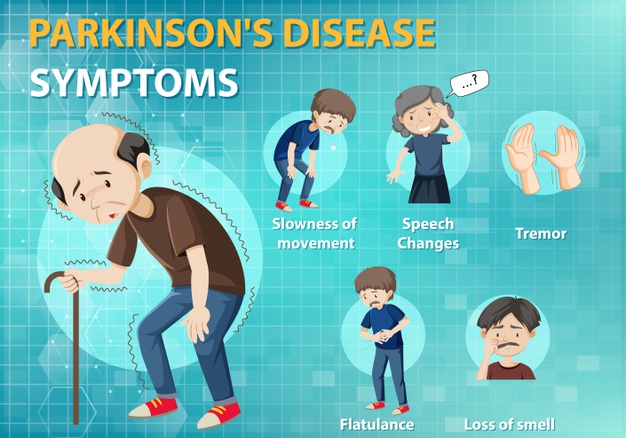
Parkinsons Disease is an umbrella term for a group of symptoms that occur because of a loss of the neurotransmitter, dopamine. Suffering with this diagnosis, can result in muscle stiffness, poor movement control, and a devastating loss of independence. But our proven treatment approaches will help you manage the movement problems, maintain your independence, and continue to live with reduced pain and better movement.
The Five Stages of Parkinson’s Disease
Parkinson’s disease is a progressive disease that has five different stages. Each stage is characterized by the amount of disability or the amount of assistance a person requires to perform functional mobility skills (ie: walking, transfers, getting in and out of bed)
Stage One
During this stage, symptoms are mild and typical can only be detected on one side of the body (unilateral). These symptoms may include mild tremor or shaking. Additional symptoms that may be noticeable by family and friends is a forward flexed posture, mild balance disturbances, decrease in facial expressions, and handwriting becomes small.
Stage Two
During stage 2, symptoms can be noticed on both sides of the body (bilateral), balance disturbances increase (and may include falls), and daily tasks come more difficult.
Stage Three
In stage 3, symptoms become more severe. Assistance is needed for walking, performing sit to stand and for completing daily activities.
Stage Four
In this stage, symptoms become more severe. Clinical presentation is marked with significant muscle rigidity and bradykinesia (slow movement). Patients in this stage require assistance and usually are unable to live on their own. It is common for tremors noted in the earlier stages to decrease.
Stage Five
A person in this stage of the disease typically requires 24 hour care and may be confined to a bed or wheelchair.
The most common Parkinson’s Disease symptoms are
- Bradykinesia/Small Movement
- Flexed Posture
- Tremors
- Speaking issues
- Thinking issues
- Balance issues
